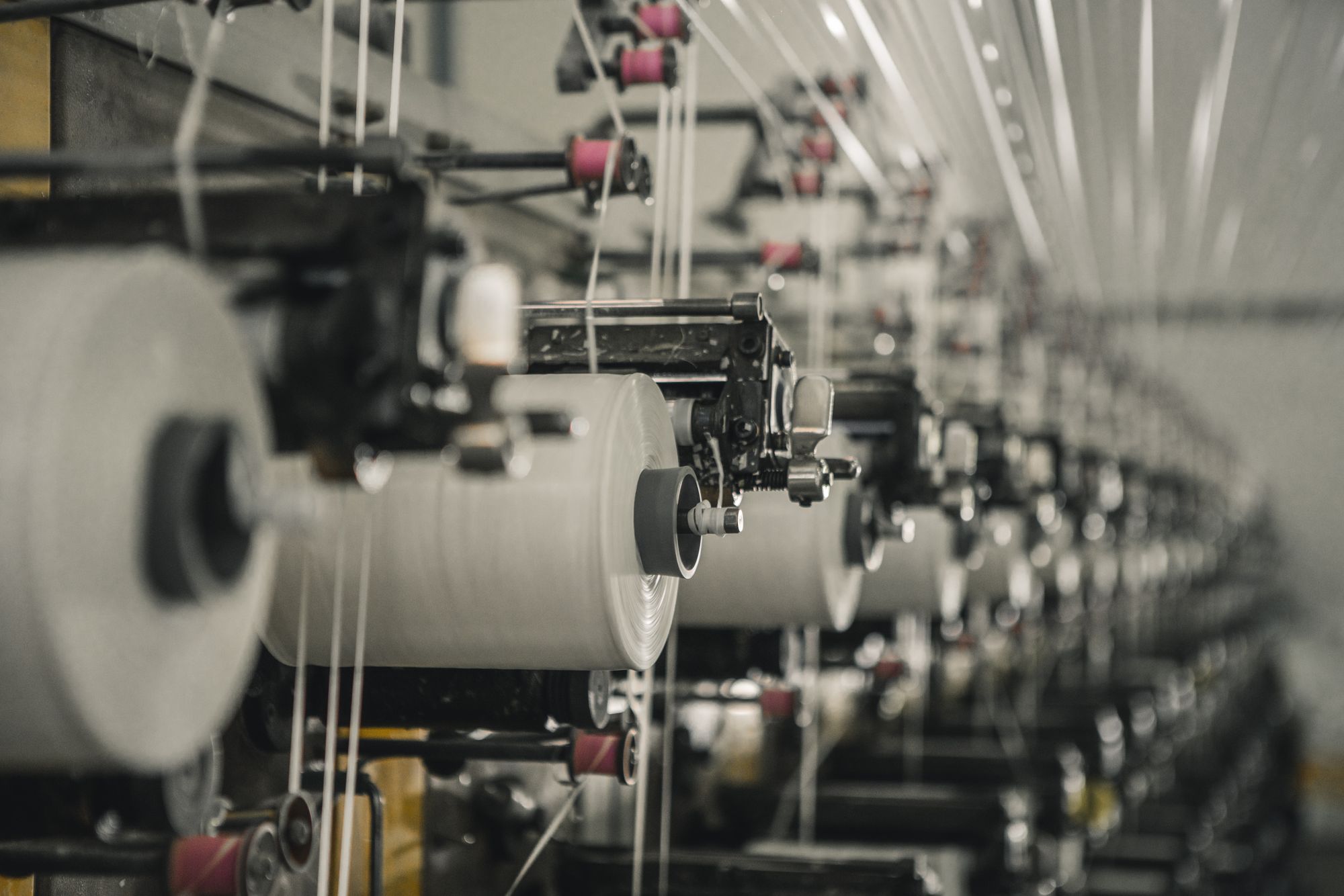Plastic manufacturing is a rapidly growing industry that is becoming increasingly important as a source of products used in a variety of industries. From medical equipment to packaging, plastic products are becoming increasingly prevalent in our daily lives.

But one of the most important aspects of plastic manufacturing is budgeting. A budget is an essential tool for any business, and plastic manufacturing is no exception.
This article covers the following:
- Establish a Clear Budget
- Utilize Cost-Saving Strategies
- Leverage Technology to Reduce Costs
- Outsource When Appropriate
- Cut Production Time
- Pursue Tax Incentives
- Track Your Spending
- Manage Your Inventory Effectively
- Take Advantage of Government Grants
- Utilize Lean Manufacturing Practices
Establish a Clear Budget
Establishing a budget for plastic manufacturing is an important part of managing any business. It helps you to plan ahead, set goals, and keep track of expenses. Whether you’re starting a new plastic manufacturing company or expanding an existing one, setting a budget is a critical first step. Here are some tips to help you create a budget that works for your business:
Assess your current situation
Before creating a budget, it’s important to assess your current financial situation. Take into account your current assets, debts, and any existing contracts. This will give you a better understanding of how much you can realistically afford to invest in your plastic manufacturing business.
Estimate start-up costs
Estimate all of the costs associated with launching your business, such as equipment and machinery, raw materials, and labor costs. This will help you determine how much money you need to get started.
Research the market
Research the market for plastic manufacturing products to determine the potential demand for your products. This will help you determine how much you should produce and what price points are reasonable.
Set up a budget
Once you have a better understanding of your financial situation and the potential demand for your products, you can create a budget. Start by setting realistic goals and then create a list of expenses and income that you can use to track your progress.
Monitor expenses
Once you have your budget in place, it’s important to continuously monitor your expenses and make adjustments as needed. Keeping a close eye on your budget will help you stay on track and ensure that you’re not overspending. Creating a budget for plastic manufacturing is essential for any business. By following these tips, you can set up a budget that works for your business and helps you reach your goals. Good luck!
Utilize Cost-Saving Strategies
Cost savings are essential in any kind of manufacturing. It is especially important in the plastic industry, where the price of raw materials and the complexity of production processes can make it difficult to make a profit.
Fortunately, there are a number of strategies that can be employed to make plastic manufacturing more cost-effective. First, consider the use of automation. Automated processes can help to reduce costs by cutting down on labor and eliminating the need for manual processes.
Automation also reduces the potential for human error, which can lead to costly delays and mistakes. Automation can also help to speed up production times, which can further reduce costs. Second, consider the use of lean manufacturing processes.
Lean manufacturing focuses on streamlining operations and eliminating waste. By reducing waste, lean manufacturing processes can help to reduce costs. For example, using lean manufacturing processes can help to reduce inventory levels, resulting in lower storage costs.
Additionally, lean manufacturing can help to reduce labor costs by improving the efficiency of production processes. Third, consider the use of alternative materials. Many plastic manufacturers are turning to alternative materials, such as bioplastics, which are more cost-effective than traditional materials.
Additionally, some plastic manufacturers are turning to recycled materials, which can be used to produce new products. By using alternative materials, plastic manufacturers can reduce their costs while still producing high-quality products. Fourth, consider the use of energy-efficient processes.
By investing in energy-efficient equipment and processes, plastic manufacturers can reduce their energy costs and improve their environmental impact. Additionally, energy-efficient processes can help to reduce waste, which can further reduce costs.
Finally, consider the use of recyclable packaging materials. Recyclable packaging materials can be used to reduce the cost of shipping and packaging. Additionally, the use of recyclable packaging materials can help to reduce the environmental impact of plastic manufacturing.
By utilizing these cost-saving strategies, plastic manufacturers can reduce their costs while still producing high-quality products. Additionally, these strategies can help to improve the efficiency of production processes and reduce the environmental impact of plastic manufacturing.
Leverage Technology to Reduce Costs
As a plastic manufacturer, staying competitive in today’s market can be tough. To stay ahead of the competition and make the most of every dollar, it’s important to leverage technology to reduce costs in plastic manufacturing. Here’s how:
Invest in Automation
Automation can help reduce labor costs and speed up production. Investing in automated equipment such as injection molding machines and robotic arms can help to reduce the amount of manual labor required in plastic manufacturing. Automation also helps to reduce errors, allowing for more consistent and efficient production.
Utilize 3D Printing
3D printing offers the potential to reduce material costs and waste. By using a 3D printer during the design and prototyping process, plastic manufacturers can save time and money by producing multiple iterations of a design quickly and cheaply. 3D printing can also reduce costs associated with tooling, as 3D printing eliminates the need for expensive molds and tooling.
Leverage Data Analytics
Data analytics can help plastic manufacturers reduce costs and improve efficiency by providing detailed insights into production, operations, and customer behavior. By analyzing data from machines, raw materials, and customer feedback, plastic manufacturers can identify areas for improvement and optimize their operations.
Invest in Design Software
Design software can help reduce costs associated with design, prototyping, and production. By utilizing software such as CAD and CAM, plastic manufacturers can create detailed designs quickly and accurately.
Design software also helps to reduce production times, allowing for faster turnaround times and reduced costs. By leveraging technology to reduce costs in plastic manufacturing, plastic manufacturers can stay competitive in today’s market and maximize their profits. Automation, 3D printing, data analytics, and design software can all help to reduce costs and improve efficiency, allowing plastic manufacturers to maximize their profits.
Outsource When Appropriate
Outsourcing is a common practice in the plastic manufacturing industry. It involves hiring external companies to provide services or resources that a company may not have in-house.
Outsourcing can save companies money, increase efficiency, and allow them to focus on core competencies. The plastic manufacturing industry is a highly competitive and complex one.
Outsourcing can be a great way to meet the demands of the industry while staying ahead of the competition. Outsourcing allows companies to access the latest technology and expertise in the field at a fraction of the cost of hiring in-house staff.
It also allows them to focus on their core competencies and products rather than having to worry about the minutiae of running a production line or managing complex supply chains.
Outsourcing in the plastic manufacturing industry can include anything from injection molding to product design and development to production and quality control. By outsourcing these services, companies can access the latest technology, expertise, and cost savings.
Additionally, outsourcing can help companies stay ahead of their competition by giving them the ability to adapt quickly to changing customer demands and trends. When outsourcing in the plastic manufacturing industry, companies should look for vendors who have an established track record of success.
It's important to select a vendor who understands the industry and the product and who can provide the expertise and resources needed to ensure success. Companies should also ensure that they have a clear understanding of the terms and conditions of the agreement and should have a plan in place for resolving any disputes that may arise.
Outsourcing in the plastic manufacturing industry can be a great way to increase efficiency, reduce costs, and stay ahead of the competition. By selecting the right vendor and ensuring a clear understanding of the terms and conditions of the agreement, companies can benefit from the many advantages of outsourcing.
Utilize Recycled Materials
Plastic manufacturing has become increasingly popular over the past several decades due to its affordability, flexibility, and durability. In an effort to reduce the environmental impact of plastic production, many manufacturers are now utilizing recycled materials to create new products.
This approach not only helps to reduce landfill waste but also helps to conserve resources and reduce energy consumption. When it comes to plastic manufacturing, recycled materials such as high-density polyethylene (HDPE) and polypropylene (PP) are commonly used.
These materials are manufactured from plastic waste, such as bottles, containers, packaging, and other discarded items. This waste is collected, sorted, and cleaned before it is fed into the manufacturing process.
The recycled materials are then melted down and molded into new products. The use of recycled materials helps to reduce the amount of plastic waste that ends up in landfills. This, in turn, helps to reduce the number of greenhouse gases that are released into the atmosphere.
Additionally, the use of recycled materials reduces the amount of energy required to produce plastic products. This helps to reduce the amount of energy that is consumed by the manufacturing process.
Furthermore, the use of recycled materials allows manufacturers to produce plastic products at lower costs. This helps to make plastic manufacturing more economically viable.
Additionally, using recycled materials also helps to reduce the amount of water and chemicals that are used in the manufacturing process. This helps to reduce the amount of pollution that is released into the environment.
Overall, utilizing recycled materials is a great way to reduce the environmental impact of plastic manufacturing. This approach helps to reduce the amount of energy and resources that are consumed during the production process.
Additionally, it helps to reduce the amount of waste that ends up in landfills and helps to reduce the amount of pollution that is released into the atmosphere. For these reasons, manufacturers are increasingly utilizing recycled materials to produce plastic products.
Cut Production Time
Cutting down production time in plastic manufacturing is something that is highly sought after by many businesses. It can help to reduce costs, increase efficiency, and improve customer satisfaction. Here are some tips for reducing production time in plastic manufacturing:
Utilize Automation
Automation can help to reduce production time by eliminating repetitive, time-consuming tasks. Automation can include anything from robotic arms and automated systems to computer-aided design (CAD) programs. Automation can also help to reduce errors and ensure consistency in the final product.
Invest in Quality Equipment
Quality equipment is essential for efficient production. Investing in quality equipment can help to reduce production time by speeding up the process and ensuring that the final product is up to the highest standards. High-quality equipment can also help to reduce costs in the long run.
Streamline the Process
Streamlining the production process can help to reduce production time. This can include anything from improving the layout of the production line to optimizing the workflow. Streamlining the process can also help to reduce errors and ensure that the final product meets customer expectations.
Improve Quality Control
Quality control is essential for ensuring that the final product meets customer expectations. Improving quality control measures can help to reduce production time by eliminating the need to redo parts of the process due to errors. Quality control can also help to reduce costs in the long run.
Utilize 3D Printing
3D printing can help to reduce production time by eliminating the need to create complex molds. 3D printing can also help to reduce costs and improve the accuracy of the final product. Cutting down production time in plastic manufacturing is essential for any business looking to stay competitive in today's market.
By utilizing automation, investing in quality equipment, streamlining the process, improving quality control, and utilizing 3D printing, businesses can reduce production time and increase efficiency.
Pursue Tax Incentives
For companies in the plastic manufacturing industry, there are numerous tax incentives available that can help reduce operating costs and increase profits. Tax incentives can take the form of tax credits and deductions, which allow businesses to reduce their taxable income.
This can ultimately result in lower taxes, allowing companies to invest more money back into their businesses. One of the most popular tax incentives for plastic manufacturers is the Research and Development (R&D) Tax Credit.
This credit allows companies to deduct up to 20% of their research and development expenditures from their taxes. This can include expenses related to product design, testing, and prototyping, among others.
Additionally, many states offer additional credits and deductions to companies engaged in research and development activities. Another tax incentive that could benefit the plastic manufacturing industry is the Energy-Efficiency Tax Credit. This credit allows businesses to reduce their taxable income by investing in energy-efficient equipment.
This could include such items as energy-efficient motors, boilers, and fans. To qualify for this credit, businesses must purchase and install energy-efficient equipment that has been certified by the Environmental Protection Agency (EPA).
Finally, there are numerous federal and state tax incentives that are specifically geared toward businesses involved in manufacturing activities. These incentives can include credits for employing individuals from certain target groups, such as veterans and the disabled.
Additionally, there may be deductions available for certain types of machines and equipment used in manufacturing. Overall, there are a variety of tax incentives available to businesses in the plastic manufacturing industry.
By taking advantage of these incentives, companies can reduce their taxes and reinvest the funds back into their businesses. This can ultimately result in increased profits and a more successful operation.
Track Your Spending
The manufacturing of plastic products has become an integral part of our lives. We use plastic products everywhere, from the packaging of food to the production of medical supplies. But do we really know how much money we are spending on plastic manufacturing?
Tracking your spending on plastic manufacturing can help you make better decisions about where and how you source materials, how to optimize your production process, and how to reduce costs. Here are a few tips to help you track your spending on plastic manufacturing:
Track Purchases
Record all your purchases related to plastic manufacturing, including raw materials, machinery, and production labor. This will help you identify any areas where you can cut costs or make more efficient use of resources.
Analyze Costs
Once you have logged all your purchases, analyze them to figure out where the greatest costs are, and look for ways to reduce them. For example, you may be able to save on raw materials by switching to a different supplier or negotiating better prices.
Monitor Production
Monitor the production process to make sure that there are no inefficiencies that could be causing unnecessary costs. For example, if you find that the equipment is running slower than it should be, that could be costing you money.
Track Waste
Track the amount of waste generated in the production process, and look for ways to reduce it. Waste can add up quickly, so cutting it down can have a big impact on your bottom line.
By tracking your spending on plastic manufacturing, you can save money, optimize your production process, and make better decisions about how to source materials and manage your production process. So get started today and start tracking your spending on plastic manufacturing!
Manage Your Inventory Effectively in Plastic Manufacturing
In plastic manufacturing, managing inventory effectively is essential to ensure production runs smoothly. Proper inventory management involves tracking inventory levels, monitoring stock movements, and understanding when and how to order new supplies.
It also involves understanding the production process and the sources of materials. By properly managing inventory, plastic manufacturers can reduce costs, increase efficiency and maintain a better overall quality of their products.
Inventory levels are important to understand, as it helps manufacturers to plan ahead. Excess inventory can lead to higher costs and a greater risk of the materials becoming obsolete or unusable.
Therefore, manufacturers should monitor stock levels to ensure that they have enough materials for production but not too much that which leads to an overstocking situation. This can be done by tracking the number of raw materials, finished goods, and work in progress. It is also important to monitor stock movements.
This helps to identify any changes in demand or supply and can help manufacturers plan for the future. By tracking stock movements, manufacturers can understand where their materials are coming from and adjust their ordering accordingly.
For example, if a particular supplier is not able to fulfill orders in a timely manner, it may be necessary to switch to another supplier. In addition to understanding inventory levels and stock movements, manufacturers must also understand when and how to order new supplies.
In order to do this, manufacturers should create an inventory management system that outlines the best times to order materials, the number of materials needed, and the types of materials needed for production.
This helps to ensure that the right materials are available when needed and helps to avoid overstocking or understocking. Finally, it is important for manufacturers to understand the production process and the sources of materials.
This helps to ensure that the right materials are used in production and that they meet safety and quality standards. By understanding the production process, manufacturers can better plan and prepare for any potential problems that may arise.
By properly managing inventory, plastic manufacturers can reduce costs, increase efficiency and maintain a better overall quality of their products. By tracking inventory levels, monitoring stock movements, and understanding when and how to order new supplies, manufacturers can ensure that their production runs smoothly and efficiently. With effective inventory management, plastic manufacturers can ensure that their products are of the highest quality and provide their customers with a great experience.
Take Advantage of Government Grants
Starting a business in plastic manufacturing can be a daunting process, especially for those who are new to the industry. To make it easier, many governments provide grants to help entrepreneurs take advantage of the latest technologies and techniques to expand their businesses.
Government grants are a great way to get the resources you need to launch or expand a plastic manufacturing business. One of the first steps to getting a government grant for plastic manufacturing is to research the specific grants available.
Many countries have government grants available for businesses looking to invest in the plastic manufacturing industry. You can find out what grants are available by visiting your local government office or by researching online.
Once you’ve identified the grants that are available, you’ll need to create a plan of action. You’ll need to detail the specifics of the project, such as the type of plastic, the equipment and supplies you’ll need, and a timeline for completion.
You’ll also need to create a budget outlining how much money you’ll need to complete the project. After the plan is complete, you’ll need to find an organization to submit the proposal.
Many countries have government organizations dedicated to providing grants for business owners. You can find these organizations by searching online or by asking your local government office.
Once you’ve found an organization to submit your proposal to, you’ll need to gather all of the necessary paperwork. This includes financial statements, business plans, and any other documents that are required by the organization.
You’ll also need to provide proof of your experience in the plastic manufacturing industry. Once the paperwork is complete, you’ll need to present your proposal to the organization.
You’ll need to be able to clearly explain your project and why it’s important to the organization. You’ll also need to be able to answer any questions they have and provide any additional information they may need.
If your proposal is approved, you’ll receive the grant money you need to launch or expand your plastic manufacturing business. You’ll also have access to the resources and expertise that the organization can provide.
With the grant money, you’ll be able to purchase the equipment and supplies you need to get started, and you’ll have the guidance of experienced professionals to help you along the way.
By taking advantage of government grants in plastic manufacturing, you’ll be able to get the resources you need to launch or expand your business. Research the grants available in your area, create a plan of action and submit your proposal to the right organization.
With the grant money, you’ll be able to purchase the equipment and supplies you need and have the guidance of experienced professionals to help you along the way.
Utilize Lean Manufacturing Practices
Lean manufacturing is a set of principles that have been adopted by many industries, including plastic manufacturing, in order to reduce production costs and increase overall efficiency.
Lean manufacturing is based on the notion of waste minimization, and it strives to eliminate waste in every aspect of production. By utilizing lean manufacturing practices, plastic manufacturers can create a more efficient and cost-effective production process.
In order to effectively implement lean manufacturing practices, a plastic manufacturer must first understand the principles behind lean manufacturing. This includes understanding the importance of eliminating waste, streamlining processes, and reducing the cycle time of production.
It is also important to recognize the importance of collaboration between all stakeholders in the production process, as well as the value of utilizing the latest technology.
Once a plastic manufacturer has adopted the principles of lean manufacturing, it can begin to identify and eliminate waste throughout the production process. This may include reducing the amount of material used, streamlining the production process, and reducing the number of steps required to complete a product.
Additionally, by utilizing the latest technology, plastic manufacturers can improve the accuracy and speed of their production process. This can help to reduce costs and increase overall efficiency.
Finally, it is important for plastic manufacturers to review their processes on a regular basis to ensure that they are continually improving their production process. By regularly evaluating their production process, plastic manufacturers can ensure that they are taking advantage of the latest technology and that they are eliminating any sources of waste.
By utilizing lean manufacturing practices, plastic manufacturers can significantly reduce their production costs and improve their overall efficiency. By streamlining their production process and utilizing the latest technology, plastic manufacturers can create a more cost-effective and efficient production process. Furthermore, by regularly evaluating their production process, plastic manufacturers can ensure that they are consistently improving their production processes.
How Can Deskera Assist You?
As a manufacturer, you must keep track of your inventory stock. The condition of your inventory has a direct impact on production planning. It also has a direct impact on people and machinery use and capacity utilization.

Deskera MRP is the one tool that lets you do all of the above. With Deskera, you can:
- Control production schedules
- Compile a Bill of Materials
- Produce thorough reports
- Make your dashboard
Deskera ERP is a complete solution that allows you to manage suppliers and track supply chain activity in real time. It also allows you to streamline a range of other company functions.
Deskera Books allows you to manage your accounts and finances better. It helps maintain good accounting standards by automating billing, invoicing, and payment processing tasks.
Deskera CRM is a powerful tool that organizes your sales and helps you close deals rapidly. It enables you to perform crucial tasks like lead generation via email and gives you a comprehensive view of your sales funnel.
Deskera People is a straightforward application for centralizing your human resource management activities. Not only does the technology expedite payroll processing, but it also helps you to handle all other operations such as overtime, benefits, bonuses, training programs, and much more.
Related Articles:












